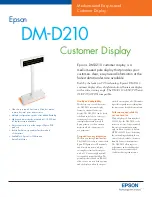
WI-MOD-E-100 & WI-MOD-E-300 Wireless Ethernet
User Manual
WI-MOD-E Manual v1.10
Page
54
3.14
Digital Input/Output
The functionality of the shared Digital Input/Output pin may be configured via the “I/O Transfer”
internal webpage. As this pin is shared, the Digital Input status will be ON when the Digital Output
is set ON.
The Digital I/O channel can be transferred to/from another device using ModBus (see section “3.15
ModBus I/O Transfer” below) or it can be configured to provide status of the module
communications. If the WI-MOD-E disassociates from another unit (that is, there is no wireless
link), you can configure the digital output to turn ON (set) or OFF (drop).
3.15
ModBus I/O Transfer
The WI-MOD-E provides ModBus TCP Client and ModBus TCP Server functionality for I/O
transfer. 5000 x 16bit general purpose registers are provided for ModBus (including the onboard
Digital Input/Output) and are shared for both Client and Server. ModBus TCP Client (Master) and
ModBus TCP Server (Slave) are both supported simultaneously, and when combined with the built
in ModBus TCP to RTU Gateway the WI-MOD-E can transfer I/O to/from almost any combination
of ModBus TCP or RTU devices.
The layout of the WI-MOD-E I/O Registers is summarized in the table below. Each register is
internally saved as a 16 bit value. A ModBus transaction may access the entire 16 bit value of any
register, or alternatively the most significant bit of a register may be accessed as a discrete value.
The main use for the general purpose I/O registers is for intermediate storage, i.e. when transferring
I/O from one ModBus Slave device to another. Also provided is the status of the onboard digital
I/O, as well as the status of the wireless link. The 16 bit status register contains the value FFFF(hex)















































